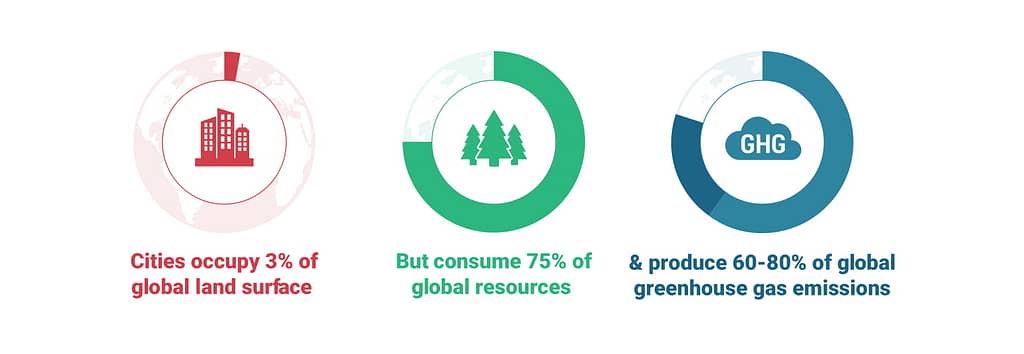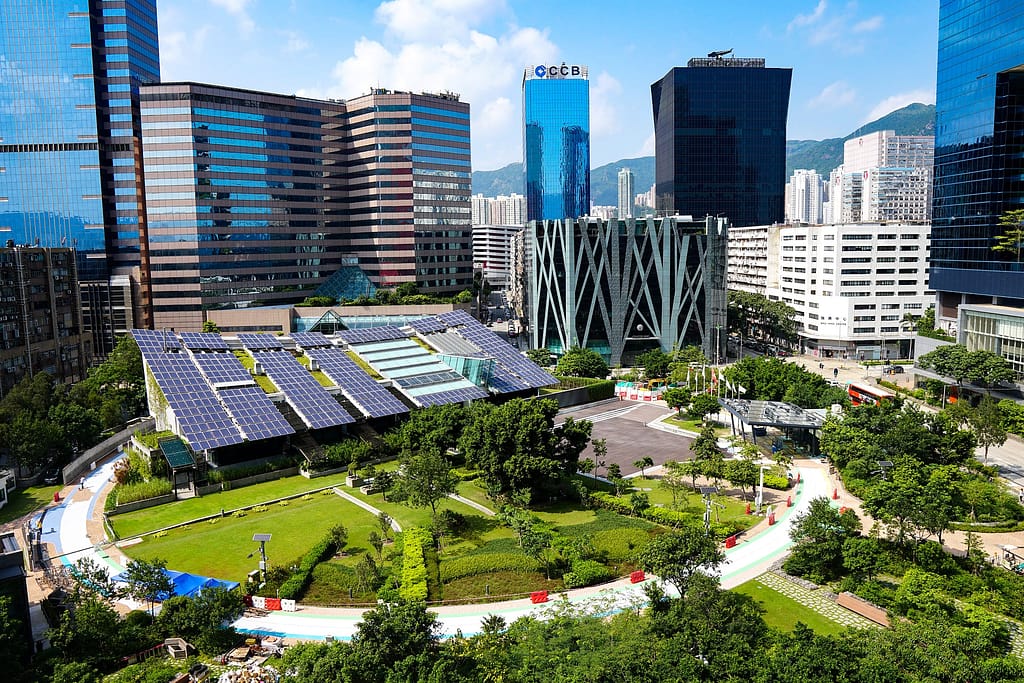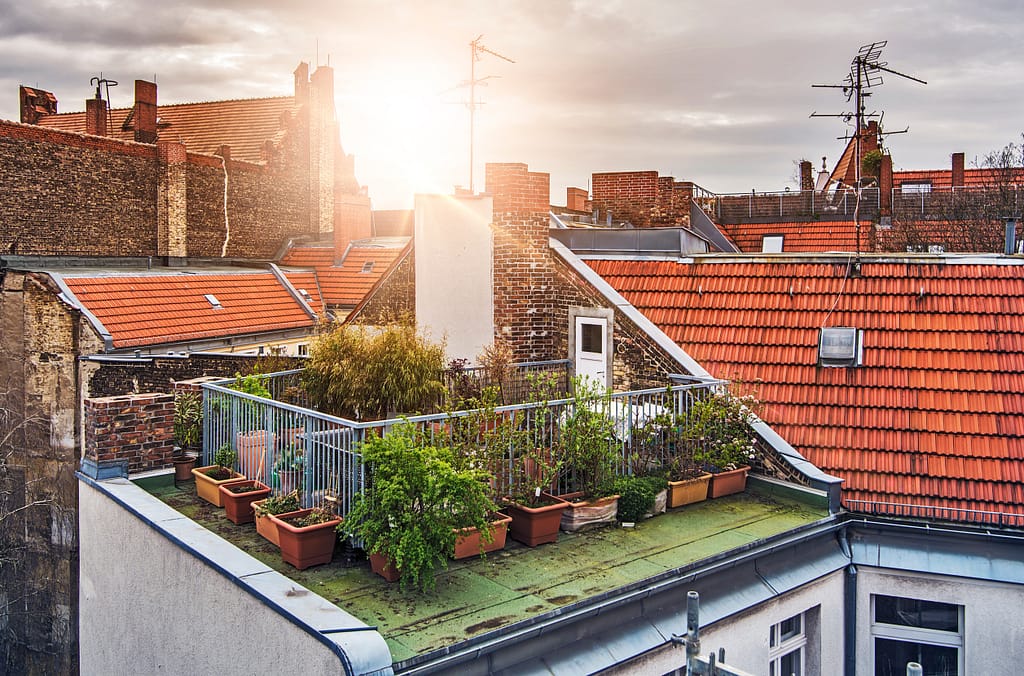First published on Greenbiz
We are in a critical decade, with a last shot to avoid the worst consequences of crises such as climate change and biodiversity loss. A recent report from the United Nations concluded that the world has failed to meet a single target on stopping biodiversity loss since targets were agreed upon in 2010. Forty percent of the world’s plants are under threat of extinction, and humanity has wiped out over 60 percent of the population of vertebrate species since 1970. When it comes to climate change, we are crossing tipping points at an alarming rate. Wildfires and storms are ravaging large parts of the world as Greenland’s melting ice sheet has passed the “point of no return” and may be destined to disappear. Forty percent of the Amazon rainforest is on the brink of shifting from rainforest to savanna.
The COVID pandemic is testing us in unprecedented ways, giving us a more tangible understanding of the importance of resilience, and of the scale of challenges we need to address as a society. We no longer can ignore our collective responsibility to change things. The time to act is now — for all of us.
Fortunately, many of us are in a position to have real impact just because of where we live. Do you live in a city? So does 55 percent of the world’s population — and urbanization continues to increase worldwide. This is significant, because cities are the main driver of many impacts described above. In our linear economy, cities act as global resource drains — devouring materials and energy from the hinterlands and spewing out waste and emissions. Although cities only occupy 3 percent of the earth’s land surface, they consume 75 percent of global resources and are responsible for 70 percent of greenhouse gas emissions.

If we fix cities, we can fix the world
Cities are what we call a “leverage point” — a place in the system where positive change can have a disproportionately beneficial impact. If we redesign our cities to be circular, regenerative and equitable, not only can we eliminate most of the impact humanity is causing globally — we also can create a future to look forward to.
“Although cities only occupy 3% of the earth’s land surface, they consume 75% of global resources and are responsible for 70% of greenhouse gas emissions.”
Take a moment to imagine life in a circular, regenerative city.
Cities are no longer one-way sinks for resources. All valuable resources that enter the city — from building materials to food to products — are collected and reused or remanufactured into new, high-value goods within the city’s borders. Cities are producers instead of just consumers, with new green industries flourishing and serving as the basis for resilient, regional economies.

Cities also have become fully carbon neutral. Most have extensive car-free zones. Many formerly congested roadways have been converted into green spaces, blurring the line between nature and urban zones. Smart, on-demand mobility systems provide optimal connectivity without the noise and smog that used to define the urban experience.
Perhaps most important, cities are built on the basis of strong communities. There are no longer monoculture neighborhoods of only office spaces or housing. Different functions are integrated into the design of resilient neighborhood units, where communities of up to 100 adults and their families have access to shared facilities such as outdoor space, health and wellness centers, child care, product libraries, advanced resource recovery units and countless other features that a single family could not typically afford on their own. This community-based neighborhood design has eliminated the housing crisis and stopped gentrification in its tracks by creating diverse and affordable housing throughout city centers.
We all need to become ‘city makers’

Hundreds of cities around the world already have made the pledge to become circular, carbon neutral and resilient. But city governments can’t achieve this alone — they need the involvement and participation of citizens to make it a reality. We all need to become “city makers” and do our part to evolve our cities toward visions such as these.
In 2012 I started my company, Metabolic, with one mission in mind: to transition the global economy to a sustainable state. Then, as now, I felt great urgency to make progress — to take action. And I knew that transforming cities was one of the most important places to start.
That same year, I met a group of architects, led by Amsterdam-based firm Space&Matter, that had uncovered a unique opportunity. Because of the financial crisis of 2008, development of new buildings had ground to a near-halt. As a result, the city of Amsterdam made a plot of land available as part of a competition. Any group who had an idea for how to use this site in a sustainable way would have a chance at getting permission to use it for 10 years.
The site was formerly a shipyard; the soil was polluted. Coming up with a business model that would work for just 10 years was a challenge. But the team came up with a brilliant idea to upcycle old houseboats that otherwise would be thrown away and to clean the soil using plants.
Metabolic joined the projectas a co-developer of the site. We developed the sustainability plan. Our goal was to see how we could close as many resource cycles on site as possible. We installed compost toilets and separate urine collection so that we could process waste on site and turn urine into fertilizer. We set up an aquaponics system to produce food — a closed system producing fish and crops. The idea was to make the area a place for experimentation using circular and clean technologies — and to really demonstrate the principles of how a community-driven development process could look.
After two years of hard work, de Ceuvel opened its gates in Amsterdam North. We have had hundreds of thousands of visitors since then. But for me, the most important thing about de Ceuvel is not even the site itself: It’s the systemic impact it has had. As a result of this one small demonstration, dozens of cities around the world have been inspired to take more concrete action on moving toward a circular model. We now have long-term relationships with three dozen cities around the world, helping them along their journey.

Witnessing firsthand the power of citizens coming together to build something that has created ripples across the world gives me deep confidence that change is possible — if we put our time and energy where it matters most.
Three challenges
So, what can you do? What actions can you take to advance the urban transition to a circular, regenerative and equitable model?
There are plenty of basic things that we should all be doing, that anyone familiar with the environmental crisis knows to do: don’t buy things unnecessarily; ride a bike or use public transport whenever you can; eat more plant-based foods; recycle; vote for public officials who promise to advance the sustainability agenda; and the list goes on.
“We need to be looking to create more structural change. We all need to become city-makers, to the extent of our abilities — take on the responsibility of crafting our habitats in a more sustainable vision.”
All of these things are, of course, important. But we also need to be looking to create more structural change. We all need to become city-makers to the extent of our abilities — take on the responsibility of crafting our habitats in a more sustainable vision. I want to highlight three critical challenges that each of us can take on — each increasingly systemic in nature:
1. If you own a house or office, take it on as a personal responsibility to make it carbon-neutral.
There are plenty of good examples of property owners taking carbon neutrality into their own hands. One example that’s close to me personally is my boyfriend’s mother, Els Kuypers, who, inspired among other things by de Ceuvel and our work at Metabolic, made it a personal project to make her house energy positive. She is gas-free, and because the solar panels on her roof generate more electricity than she uses over the course of the year, she actually gets paid by an energy company rather than having an energy bill. This was not an inexpensive endeavor, despite the many subsidies and forms of support that exist. But for Els, this wasn’t a traditional investment. The returns come in the form of deeper satisfaction: knowing you have done the right thing and contributed to securing the future for all of us. We all need to start thinking of our investments in a different way.
2. Actively shape your neighborhood and community.
As citizens we have the power to shape the development of the cities around us. If you are fortunate to have a good housing situation, make a point of becoming a really active citizen in your neighborhood. Get to know your neighbors, participate in feedback events organized by the city and identify ways that you can help to build out your community to make it better and more sustainable. If you are looking for a new housing situation, consider possibilities for joining together with a community to build your own sustainable, affordable housing. My colleagues at work have set up a project called de Warren (Dutch): a jointly financed apartment block, built to the highest sustainability standards, which will provide all of them with shared facilities. Although this pathway is not always easy, many of us are fortunate to have the tools to play an active role in developing how our cities look and function. If our contexts allow, more of us need to take this on as a challenge.
3. Spend your time in ways that support the sustainability transition.

If you are employed, ask yourself whether the organization you are working for is structurally supporting the kind of transition we need to see. If not, hold your team accountable to stretch its sustainability ambitions, or consider changing jobs — or even starting your own business. We need more disruptive, circular solutions in cities: companies that eliminate single use packaging; create local, circular textile chains; and advance circular construction.
In the COVID economy, these avenues will be especially challenging or not possible for many right now. But the disruption of the pandemic also may offer an opportunity to pivot and reskill for some, particularly in light of green stimulus packages that may be forthcoming as governments roll out recovery responses.
Some of these actions are bigger than others — some may seem daunting. But there are enough citizens with an enabling context to make this transition happen, and the power resides collectively with us. It’s not enough, anymore, to just ride our bikes and recycle — we need to take on more personal responsibility in making this transition happen. And striving for a better life together, with all of us taking on these challenges together, is one of the most satisfying things we can do with our lives. The time to act is now.




